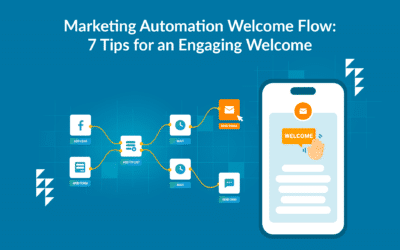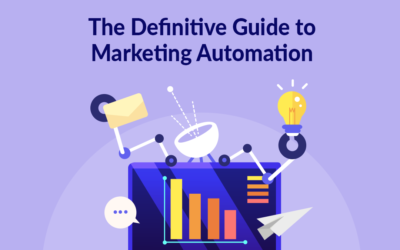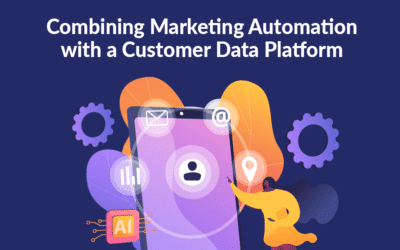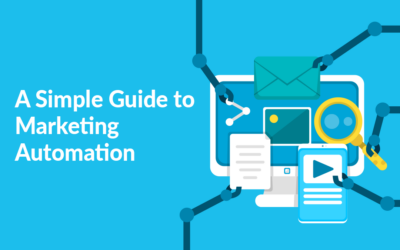In previous articles we have discussed the benefits of Marketing Automation. In this article, we take a closer look at how to design the perfect Marketing Automation flow, to suit your business.
The process of identifying how Marketing Automation can help can be a daunting task. Often, it is a task that is neglected within a company. And when assigned, it falls into the hands of a marketing assistant. The marketing assistant then has the mind-boggling experience of trying to define the gaps within the company’s processes. However, these gaps can be bridged with the use of Marketing Automation.
Marketing Automation is far too important to be delegated to just one person. It should be high on the list of priorities, not just for the marketing department, but for all departments. All departments within the company have a great interest in ensuring customer satisfaction. Therefore, every department can benefit by having their manual processes automated.
Determining the Perfect Marketing Automation Flow
The first steps in determining the perfect Marketing Automation flow are not done in front of a computer. They are done by conducting discussions in a group meeting. The most efficient Marketing Automation flow is delivered to customers precisely at the right time. And more importantly, with the right message.
In order to set up the perfect automation flow, it is a good idea to bring all departments together. Here, an open discussion can take place and the customer journey can be reviewed, optionally utilizing the aid of a customer journey builder. The current customer journey can be mapped out on a whiteboard. As a result, the ideal customer journey can be visualized and discussed, by noting improvements.
A good outcome is when a considerable amount of time is spent brainstorming and outlining the customer journey. Along with determining the ideal customers. The result should be a detailed description of who your customers are; how long the buying process takes, what triggers customers to buy, why some choose not to buy and so forth.
Internal staff members may be uncomfortable in asking the difficult questions. So, it can be beneficial to bring in an external consultant into the process. The consultant can play the role of devil’s advocate and ask those difficult questions. By doing so, you can obtain an outside perspective as well.
With the finished description in hand, the next step is to pinpoint the gaps in the process. This is where Marketing Automation will help you bridge those gaps. The gaps will vary as each company has a different decision-making process customers go through before buying.
Companies With a Short Sales Process
With Marketing Automation, companies with a short sales process are often focused on the customer experience. All while ensuring satisfaction with the purchase along with upselling opportunities.
In addition, web-shops often focus on abandoned cart flows. For example, automatic emails that are sent out if a customer has started a purchase but failed to complete it. Another idea is to create a number of “re-activation flows”. An automatic flow that starts when a customer has not made a purchase in a long time. For example, the pet store automatically sends out emails if a customer has not placed an order for their usual dog food or dog bug spray.

Companies with Long Sales Processes
Marketing Automation can also benefit companies with a long decision-making process. This is achieved by automating parts of the process. Long decision-making processes exist within both B2B and B2C. And with Marketing Automation decision-making processes can be reduced and leads kept warm.
If Marketing Automation within B2C is used in travel agencies or car dealerships, it can send continuous information to the customer. By doing so, the customer receives information to assist them in making an informative decision. The key objective here is to ensure the customer continues to receive relevant information, keeping them engaged. Therefore, minimizing the need for the customer to search for information from a competitor.
The same can be said for B2B. Marketing Automation is ideal for ensuring customers are kept warm. With the delivery of ongoing information, they are well prepared for their purchase. As a result, they do not find it necessary to search for information elsewhere.
The Overflow
In addition, there are a large number of other flows that one might consider setting up. This would depend and vary with each company and the situation.
For example, imagine an online software application that does not offer personal onboarding and customer service. Then the first flow would be one that helps customers through online onboarding.
The Helping Hand
As you can tell by now, Marketing Automation is a helping hand. Not only does it ensure timely and consistent communication, but it also automates the processes that would be done manually. Or not done at all.
While at first it may seem unmanageable, it is a very valuable tool for any company to have. And definitely an eye-opener for many of those involved in visualizing the customer journey and the gaps in communication.
So, designing the perfect marketing automation flow will depend on the type of business you run along with which stage of the journey the customer is at. Ultimately, the time invested in mapping out the customer journey and automated flows, will result in a high return on investment.
This blog post has also appeared in a MarketingPlatform Newsletter.
Author: Alex Trajcevski
Try MarketingPlatform for free for 14 days
The trial period is free, completely non-binding and expires after 14 days if you do not wish to continue.
When you sign up, you will also receive our educational flow via a series of emails along with our newsletter with regular updates.





